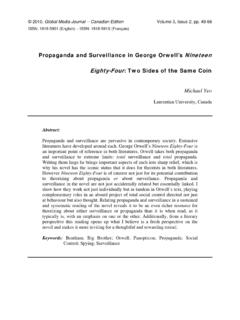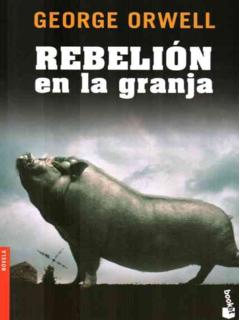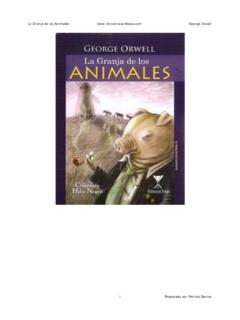Transcription of Chapter 4 Analysing and evaluating writers’ methods and ...
1 117 Chapter 4: Analysing and evaluating writers methods and effectsChapter 4 Analysing and evaluating writers methods and effectsEnglish Language GCSEE nglish Literature GCSEW hich AOs are covered?AO2 Explain, comment on and analyse how writers use language and structure to achieve effects and influence readers, using relevant subject terminology to support their viewsAO2 Analyse the language, form and structure used by a writer to create meanings and effects, using relevant subject terminology where appropriateHow will this be tested?Some questions will ask you to focus in detail on particular words and phrases. Others will identify a particular area of a text and ask you to look closely at the meanings and techniques being used in that particular the texts you will be responding to will be previously unseen . Wider questions will ask you to analyse and comment on the overall text, paying attention to the language, the structure or the literary techniques being used by the writer to communicate meanings and create you will be responding to a whole play or novel that you have studied in class and sometimes you will be writing about two previously unseen poems.
2 What s it all about?In this Chapter , you will learn about how writers make conscious decisions about the words they choose, the techniques they use, and the way they structure and shape their texts in order to create meanings and communicate their ideas to their this Chapter , you will learn how to explain and comment on writers use of language explain and comment on writers use of language techniques explain the ways writers use language to create character explain and comment on writers use of structural features explain and comment on writers use of openings explain and comment on the ways writers create meanings and effects with structure and form apply your skills to English Language and English Literature and comment on writers use of languageWhy does it matter what words and phrases the writer chooses? Getting you thinkingWhen reading a text for the first time, focus on these key questions. What is the writer s viewpoint? How does the writer want me to think or feel?
3 The writer s viewpoint will be communicated through his or her choice of The Road to Wigan Pier, George Orwell writes about a time of great change in the north of England following industrialisation. 1 What does Orwell describe in this extract?As you travel northward your eye, accustomed to the South or East, does not notice much difference until you are beyond Birmingham.[..] It is only when you get a little further north, to the pottery towns and beyond, that you begin to encounter the real ugliness of industrialism an ugliness so frightful and so arresting that you are obliged, as it were, to come to terms with it. George Orwell, from The Road to Wigan Pier 2 What is Orwell s attitude to what he sees? Does he like it? Which words and phrases tell you this? Explore the skills Now you have worked out the main viewpoint of the text, you can begin to explore the ways in which Orwell communicates this to the reader. In the next paragraph, Orwell describes what he sees when he visits a mining objectivesYou will learn how to identify the overall viewpoint in a text write about the effects of writers language choices, linking them to the overall objective English Language AO2A slag-heap is at best a hideous thing, because it is so planless and functionless.
4 It is something just dumped on the earth, like the emptying of a giant's dust-bin. On the outskirts of the mining towns there are frightful landscapes where your horizon is ringed completely round by jagged grey mountains, and underfoot is mud and ashes and over-head the steel cables where tubs of dirt travel slowly across miles of country. Often the slag-heaps are on fire, and at night you can see the red rivulets of fire winding this way and that, and also the slow-moving blue flames of sulphur, which always seem on the point of expiring and always spring out again. Even when a slag-heap sinks, as it does ultimately, only an evil brown grass grows on it, and it retains its hummocky surface. One in the slums of Wigan, used as a playground, looks like a choppy sea suddenly frozen; 'the flock mattress', it is called locally. Even centuries hence when the plough drives over the places where coal was once mined, the sites of ancient slag-heaps will still be distinguishable from an aeroplane.
5 3 Read the paragraph again and find examples of Orwell s language choices to complete the second column of the choiceExample(s)Effect: how it makes me feel and whyAdverbials underfoot / over-head / ringed completely round Create a feeling of claustrophobia because they suggest people are completely surrounded by the effects of industrialisationReferences to colourPowerful adjectivesRepetition Imagery or comparisonsChapter 4 . Topic 1 Key termsviewpoint: an attitude, opinion or point of viewGlossaryindustrialisation: the growth of the steel, coal, textiles and manufacturing industries in the late eighteenth and nineteenth centuriespottery towns: towns like Stoke-on-Trent where pottery was manufacturedKey termsEffect: how a writer s choice makes you feel or think; what it reminds you of; what it makes you picture Adverbials: words or phrases used to modify a verb, adjective or adverb to tell you how, when, where something is happening 1184 . 1119 Chapter 4: Analysing and evaluating writers methods and effectsAQA GCSE English Language and English Literature: Core Student Book120120 Chapter 4.
6 Topic 1 Check your progress:I can interpret the writer s viewpoint and make detailed comments about a range of carefully selected words and phrases to support my can clearly explain the writer s viewpoint, using some relevant examples to support my am aware of the writer s viewpoint and can pick out one or two words and phrases from the text. Apply the skills Now you have selected two or three specific examples of language to explain and comment on, you are ready to form a response to a question. How does Orwell use language to communicate his viewpoint about the industrial north of England? 7 Make a brief plan first of all. You might want to use the one below as a guide for each paragraph. 8 Repeat the planning process for each point you want to make and write your response. Develop the skills The next step is to explain the effects of the writer s language choices: how they make you feel and why. 4 Look at the way this student has commented on the effect of Orwell s use of colour.
7 Orwell uses colour references to create a sense of danger or threat. He describes the fires as moving like red rivulets . All the other colour references are grey or brown which creates a feeling of death and decay. The use of red is a contrast to this and makes the fires caused by the slag heaps seem even more noticeable and dangerous. Orwell is suggesting that the industrial north of England is a dangerous, hellish place to live and the point, the evidence and the explanation of the effect. How has the student linked this effect to Orwell s overall viewpoint? 5 Which other language choices from your table suggest living in the industrial north might be unpleasant or unnatural? Choose the two examples you can write most about. Make notes about their effects (what they make you think, feel or picture) in the final column. 6 Now write a short paragraph about one of your examples explaining what effect you think it creates and how it helps to communicate Orwell s viewpoint to the for success Make a clear point.
8 Use some appropriate evidence. Explain the effect on the reader and link this to Orwell s Orwell is suggesting that the north of England has been completely taken over by industrialisation He uses adverbials to create a sense of how claustrophobic it is for the inhabitants Examples of adverbials include round , underfoot , over-head , all round , between , covered with This creates a sense of claustrophobia as he seems to be suggesting that the effects of industrialisation are surrounding the people who live there Clear overview of writer s viewpoint Identification of a language feature Examples, using direct evidenceExplanation of the effect of the language used1201204 . 1121120 AQA GCSE English Language and English Literature: Core Student BookChapter 4: Analysing and evaluating writers methods and effectsChapter 4 . Topic 1 Explore the skills 4 Now read the first two paragraphs and answer the you give a child a loaded gun? Loaded guns are unbelievably dangerous, and children s brains not yet capable of properly understanding danger, or heeding warnings.
9 Of course you wouldn would you 1 allow a 17-year-old to drive a car? 2 We ve 3 all been right behind it, for many years: or at least, no one I know has been out on the streets protesting about the threshold at which teenagers can apply for a provisional driving licence. Develop the skills Read paragraphs 3 and do writers use language techniques to influence the way I think about things? Getting you thinkingGood writers use language techniques to get their viewpoints across. 1 Look at the first two lines of the article and find an example of a rhetorical technique in s put the brakes on teen drivers and make them wait until they are olderBy Joanna MoorheadA recent report has recommended that the age for probationary driving licences be raised to 18. Would you give a child a loaded gun? The Guardian, Friday 11 October 2013 2 What effect is this technique designed to have on the reader? 3 What do you think is the writer s viewpoint?Key termsrhetorical technique: a language technique used to persuade a reader to consider an idea from a different point of viewLearning objectivesYou will learn how to Identify and explain the effects of some language techniques in a non-fiction text Comment on these techniques in your own objective English Language AO2 Explain and comment on writers use of language techniquesChapter 4.
10 Topic 2 But now, at last, sanity is starting to prevail. A government report, by the Transport Research Laboratory, 1 has recommended raising the age at which kids can learn to drive to 18. My 15-year-old daughter, 2 who is counting the months until she s almost 17 (the application can go in three months before their birthday) will be devastated when she hears the news and so will thousands of other teens, for whom getting a licence and learning to drive is seen as a rite of I use the word kids deliberately. Anyone who has older children and I have two, aged 21 and 19 knows they are really toddlers in an extraordinarily effective disguise. They look (especially if you don t currently have one) so adult! All grown-up! 3 But and there s an increasing amount of research to back this up until they re at least 21, their brains are still in formation. They don t yet think like adults; in particular, they don t connect actions and consequences . If you re a driver, you know how bad that could be.
















